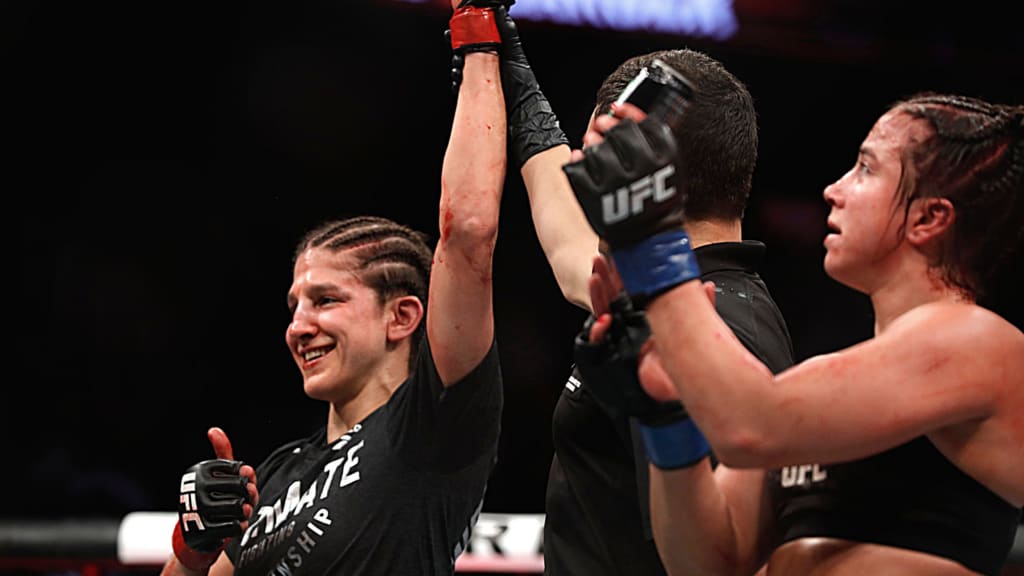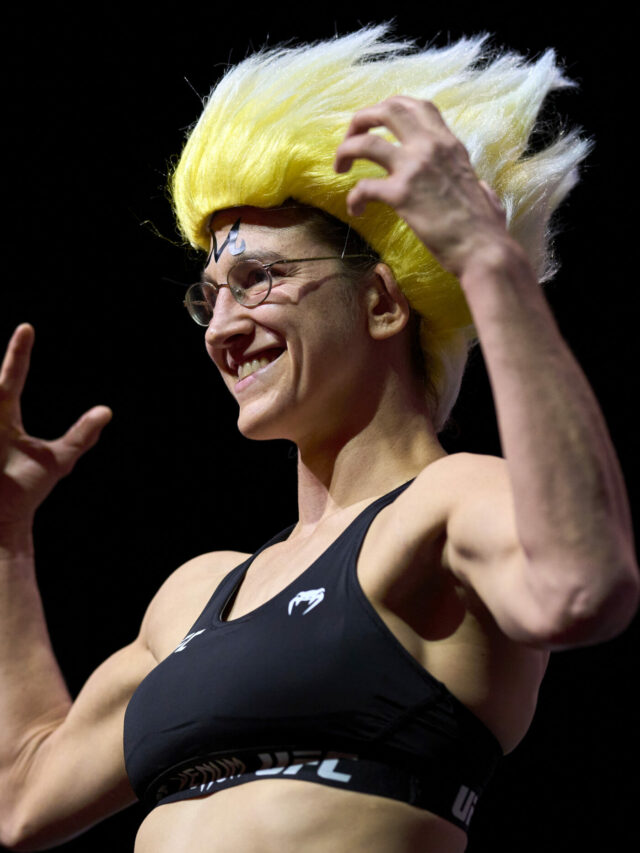In her latest column, recently retired MMA fighter Roxanne Modafferi breaks down what really matters to UFC judges when they score fights.
Ten seconds left in round two! Fighter A shoots a double-leg take-down. Fighter B tries to sprawl, but it’s too late. They both hit the ground. Fighter A lands on top in B’s closed guard, and swings a punch. It misses. The round ends.
“Great,” thinks Fighter A, “That take-down looked good to the judges!”
But did it really? Does that last minute take-down really look good in the eyes of the judges? Would it surprise you if I told you it didn’t? Do you know exactly what the judges are looking for?
As a fighter, I didn’t really care. I wanted to fight as hard as I could and finish the fight. We aren’t supposed to “leave it in the hands of the judges” anyway. I didn’t want to think about out-pointing someone.
Then my bout turned into a close fight with three minutes left, and suddenly I had to think about what to do. Everybody’s tough! It’s hard to finish somebody off!
Unified Rules
You watch MMA, but do you know the Unified Rules well enough to understand what really matters to judges and how they score a fight? Have you read them? I read them but apparently I didn’t study them closely enough until last week.
You watch MMA, but do you know the Unified Rules well enough to understand what really matters to judges and how they score a fight? Have you read them?
The main focus in the Unified Rules – and consequently what contributes more to a fight outcome – circulates around notions of what constitutes “effective” grappling and striking.
Did you tackle your opponent and sock them in the face? That’s effective. Did you trip them, hold them in half-guard, try to elbow but it was blocked? Ineffective.
“Effective grappling” is defined as a successful takedown that is not only completed but allows the fighter to mount an attack from it.
What UFC judges look for
That means our little last-minute take-downs could be counted as nothing, unless that was the only thing in five minutes to have occurred.
I remember watching Lauren Murphy’s videos to prepare to fight her, and she often tried to get the “last ten seconds take-downs.” Heck, she did it to me in our fight, and I did it to Casey O’Neill, feeling pretty good about myself. I’m not sure about the rules years ago, but under the current set of rules, those aren’t counted at all unless we follow up with some damage.
So what is the number one thing UFC judges are looking for? Here’s the answer: Damage. And who is looking to end the fight. The rules say “impact” rather than “damage.”
What is the number one thing UFC judges are looking for? Here’s the answer: Damage.
One thing that has changed in recent years is how aggression and exerting control over the fight has less sway over a fight outcome.
On page one of the Unified Rules, it says, “Aggressiveness should not be considered until the judge does not see ANY advantage in the effective striking/grappling realm. Cage control should only be needed when ALL other criteria are 100% even for both competitors. This will be an extremely rare occurrence.”
Cage control
Well, I feel like that’s not how it used to be when I was growing up as a fighter back in the day. Aggressiveness, going forward, and controlling the cage seemed to be weighed more heavily.
Nowadays, it’s not supposed to be considered at all if a pair of fighters are throwing down and hitting each other. If a fighter is moving forward but getting hit with counters every time (like me when I fought Viviane Araujo), the counters were doing more damage. Therefore, the counter fighter would win, even while stepping backwards.
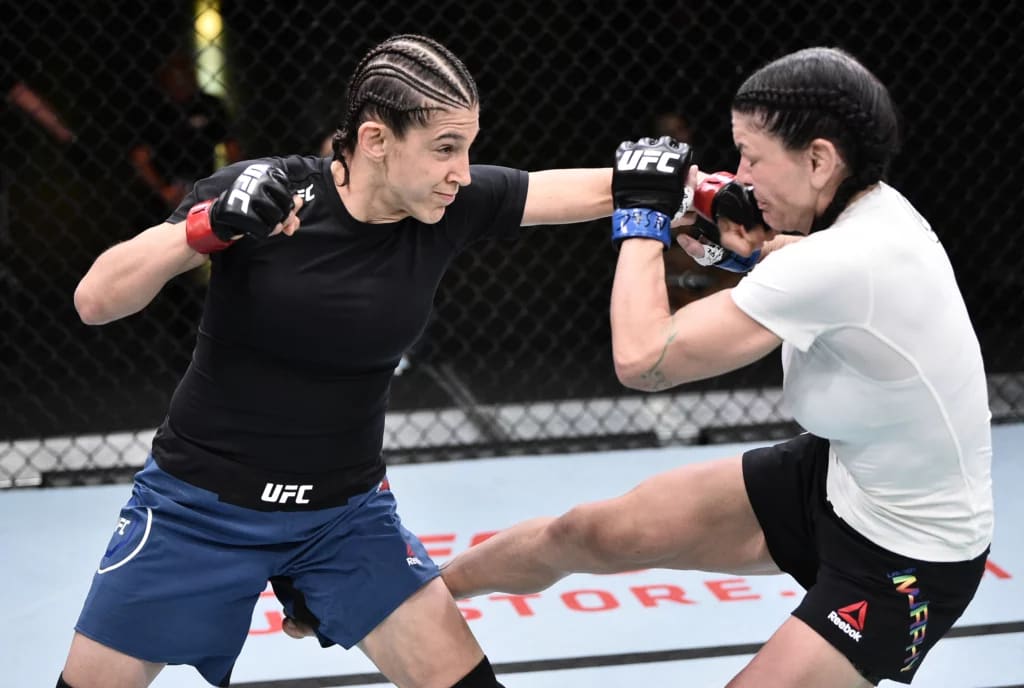

When on the ground in a top/bottom situation, the Unified Rules state that the fight should be assessed on actions rather than position. If the bottom person almost finishes the fight with submissions, or throws elbows from below, they should be able to win that battle in the eyes of the judges.
A “significant strike which almost ends the fight” is supposed to count more than cumulative damage. For example, Fighter A lands lots of jabs and straights while Fighter B lands only once in a while.
Points system
Suddenly Fighter B steps in with an overhand! Fighter A falls to the floor! Fighter B rushes and starts throwing hammer fists and elbows. Fighter A hangs on to a leg and tries to hide his or her head. The round timer goes off.
Fighter B should win that round because he or she wasn’t being totally demolished, and then almost ended the fight. Those defining moments are weighed more heavily.
The point system is another ballgame. The figure of 10-8 should be given if there is significant damage and domination done in a round, while 10-9 is supposed to be given for a closer margin. There are a lot of details given in the rulebooks about that.
Judging is not easy. It would behove fighters and coaches as well to be open minded and read the small print. It might not have made a huge difference to me since I always tried to end the fight, but some details are good to know.
Poker face
Jordan “The Monkey King” Leavitt told me that he made it a point to read the rules carefully before his fight earlier this month against Trey Ogden, which impacted his behavior in the bout.
“‘Poker face-ing’ is important,” Jordan said. “Judges don’t judge the move, they judge how it affects the narrative of the fight. That’s why when I threw so many leg kicks and he punched at my face, I tried not to show panic, react too much, or back out too hard.
“I tried to show that they didn’t bother me, even though some actually hit me. If the judges don’t think it bothers me, they won’t count the punches as effective damage. We run into trouble when judges are inconsistent.”
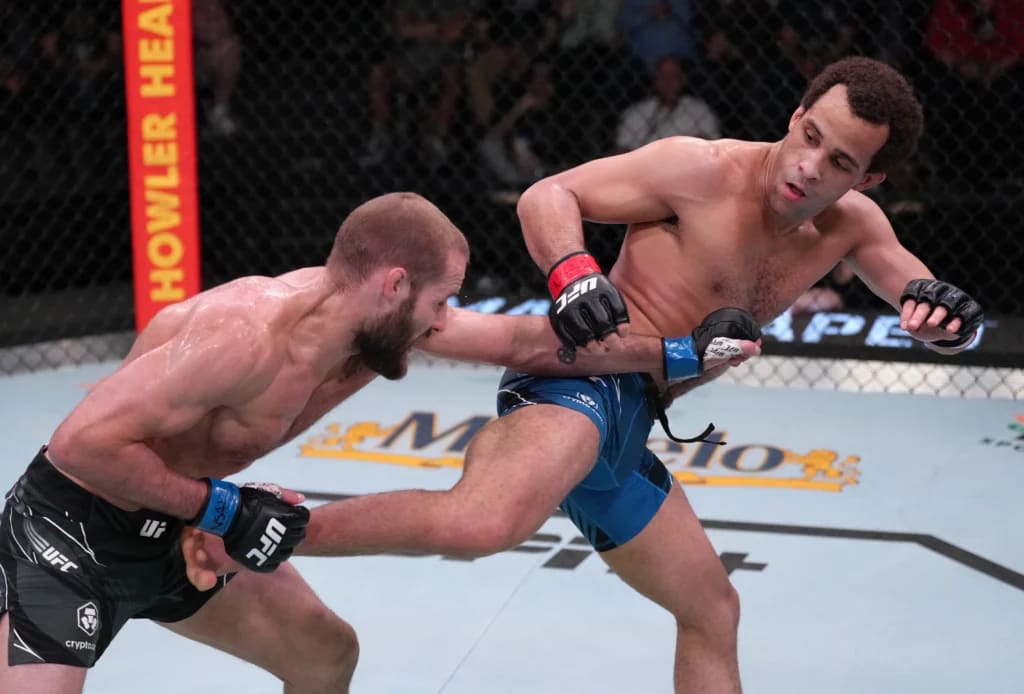
All judges are registered. My personal opinion is that not only should all judges have to go to MMA-specific judging training courses, but in addition, they should participate in martial arts, at least for a few classes, if not more.
This gives them an insight and further knowledge of the sport. Many people have voiced concerns over boxing judges presiding over MMA fights. They would be most familiar with striking and biased, favoring damage done in striking to grappling attacks.
At one of my gyms, I saw an MMA ref taking jiu jitsu classes for the purpose of education. I commend him for taking his job seriously.
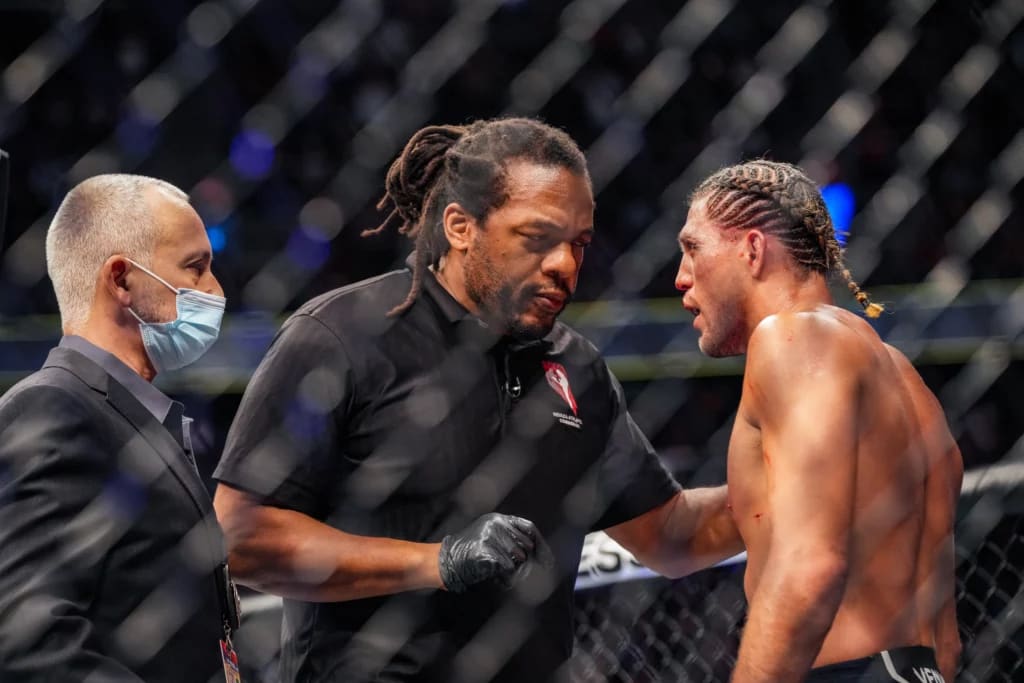
It’s also wonderful to see more and more former fighters getting into reffing. Clearly they could make good judges because of their experience in the cage.
I hope to see more of this in the future. Having more judges with training or martial arts experience can only benefit the sport.

